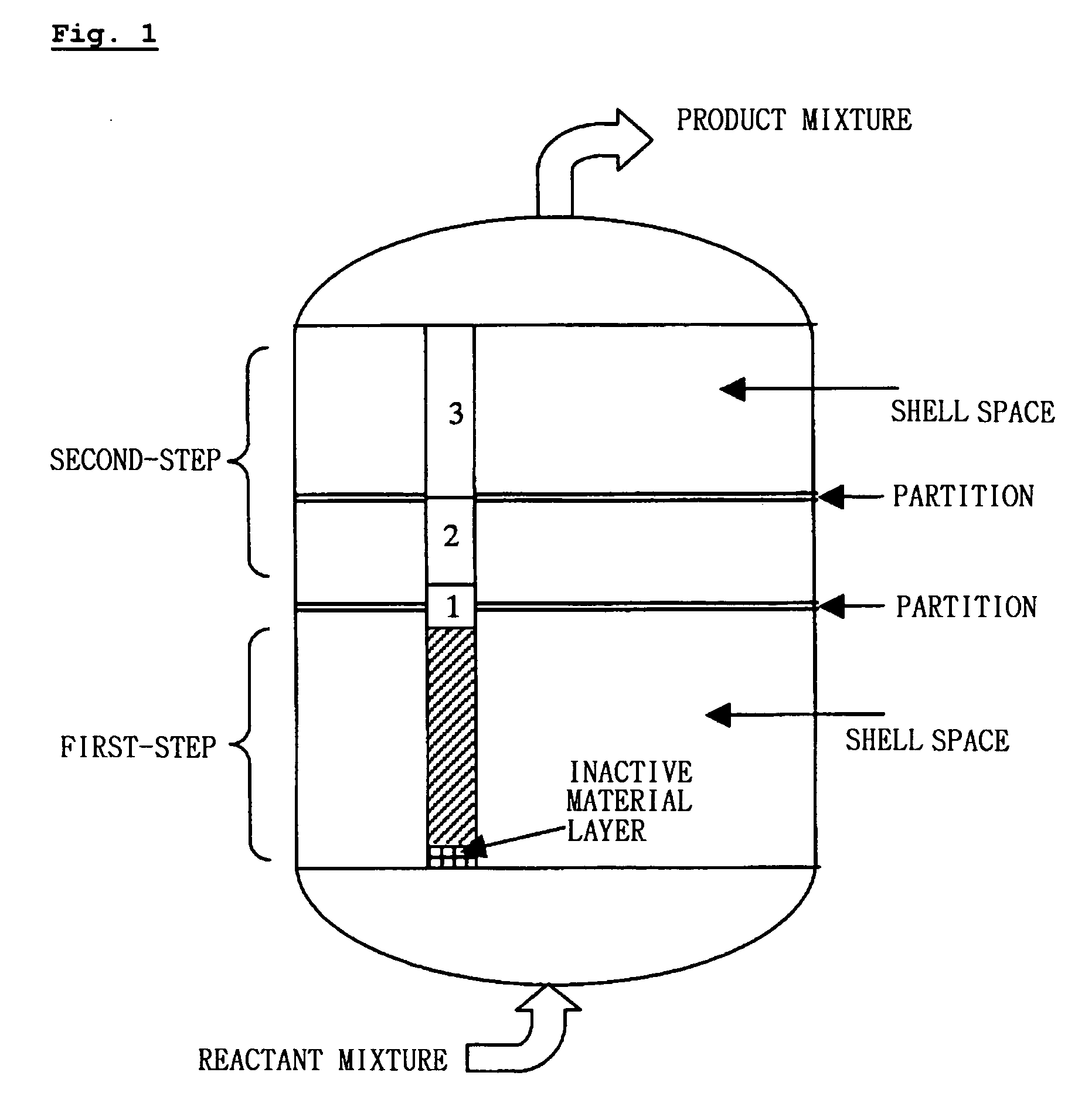Method of producing unsaturated acid from olefin
- Summary
- Abstract
- Description
- Claims
- Application Information
AI Technical Summary
Benefits of technology
Problems solved by technology
Method used
Image
Examples
example 1
Use of Mixed Catalyst Layer and Multi-Stage Heat Control
[0044] The following experiment was carried out in a pilot reactor having one reaction tube, in which both the first-step reaction and the second-step reaction are performed. The reaction tube had an inner diameter of 26 mm. The first-step catalyst layer and the second-step catalyst layer were packed into the reaction tube to a height of about 3570 mm and about 3125 mm, respectively. The catalyst packed into the first-step reaction zone was a first-step oxidation catalyst based on molybdenum (Mo) and bismuth (bi). Preparation of the catalyst is disclosed in Korean Patent No. 0349602 (Korean Patent Application No. 10-1997-0045132). Each of the three catalyst layers packed into the second-step reaction zone was comprised of a second-step oxidation catalyst based on molybdenum (Mo) and vanadium (V). Preparation of the catalyst is disclosed in Korean Patent No. 0204728 or 0204729.
[0045] The second-step catalyst layers were formed...
PUM
| Property | Measurement | Unit |
|---|---|---|
| Temperature | aaaaa | aaaaa |
| Fraction | aaaaa | aaaaa |
| Fraction | aaaaa | aaaaa |
Abstract
Description
Claims
Application Information
 Login to View More
Login to View More - R&D Engineer
- R&D Manager
- IP Professional
- Industry Leading Data Capabilities
- Powerful AI technology
- Patent DNA Extraction
Browse by: Latest US Patents, China's latest patents, Technical Efficacy Thesaurus, Application Domain, Technology Topic, Popular Technical Reports.
© 2024 PatSnap. All rights reserved.Legal|Privacy policy|Modern Slavery Act Transparency Statement|Sitemap|About US| Contact US: help@patsnap.com








